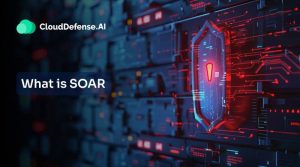The recent Black Hat USA conference, held in Las Vegas, once again solidified its position as the premier gathering for cybersecurity professionals worldwide. Now, it’s time to reflect on the wealth of knowledge and insights gained in Las Vegas.
As always, the conference was super enlightening, offering groundbreaking discussions, innovative solutions from leading vendors, and in-depth looks at pressing security issues. This year, the spotlight was on the crucial role of cloud security as more organizations turn to cloud technologies to drive their business forward.
If you missed anything, don’t worry—we’ve got you covered. In this article, we’ll explore the key takeaways and industry trends that stood out. Let’s dive into the highlights that will shape the future of cybersecurity.
1. The Spotlight on Cloud Security
Cloud security took center stage at Black Hat 2024, reflecting its critical importance in our increasingly digital world. As pandemic-driven cloud migrations mature, organizations are grappling with the complexities of securing these environments.
One big issue discussed was the increasing skill of cybercriminals using cloud services for their attacks. For example, Microsoft’s OneDrive and Google Drive are often being exploited to implement malicious operations and steal data. This is a huge concern because these attacks can easily blend in with regular traffic, making them tough to detect.
The conference also pointed out some serious vulnerabilities in major cloud platforms like AWS, highlighting risks like unauthorized access and privilege escalation. These issues are a reminder that cloud security is still a major challenge for many companies.
Experts emphasized the importance of strong security practices, with zero-trust models and least privilege policies coming to the fore. Although progress is being made, it’s clear that securing cloud environments is a continuous effort that demands ongoing attention and adaptation.
2. The Surge of GenAI Adoption
At Black Hat 2024, the buzz was also about generative AI in the business world, and it’s clear that security concerns are at the top of people’s minds. Industry data shows a fascinating trend: nearly 50% of companies have already woven GenAI into their analytics and business intelligence efforts. Most others are either testing it out or planning to roll it out this year.
Such rapid uptake has cybersecurity experts on high alert. Securing GenAI infrastructure is no easy task—there’s no single solution that fits all scenarios. Instead, businesses are using a variety of strategies to manage the risks.
Data Security Posture Management (DSPM) tools are becoming popular because they help identify and categorize the data sources that feed into AI models. Meanwhile, there’s growing interest in solutions that tackle AI model risks, enhance AI application security, and prevent data loss in AI systems.
The takeaway from Black Hat was clear: as AI becomes a bigger part of business operations, securing its infrastructure is no longer a choice—it’s essential for maintaining trust and integrity in AI-driven processes.
3. The Software Supply Chain: A Growing Cybersecurity Battlefield
At Black Hat 2024, the spotlight was also firmly on the pressing issue of software supply chain security, reflecting the industry’s growing concerns. A recent example, the CrowdStrike update glitch that led to widespread outages, highlighted just how delicate our interconnected software systems can be. While this wasn’t a cyberattack, it was a powerful reminder of how devastating the consequences of supply chain vulnerabilities can be.
Experts emphasized the need for a multifaceted approach to improve resilience. Key strategies discussed included:
- Shifting security checks earlier in the development lifecycle
- Implementing rigorous vendor assessments
- Enhancing visibility into third-party dependencies
- Adopting automated continuous monitoring solutions
The consensus was clear: organizations must prioritize supply chain security to safeguard their digital assets and maintain operational integrity in an increasingly complex technological landscape. This requires a cultural shift, viewing security as an integral part of the development process rather than an afterthought.
4. Adopting the Zero-trust Mindset
The buzz around Zero Trust at Black Hat 2024 was impossible to ignore. It’s clear the industry is moving beyond traditional perimeter defenses, embracing a “trust no one” mindset.
This shift is a fundamental rethink of how we approach security. Gone are the days of assuming safety within our networks. Now, every user, device, and connection is guilty until proven innocent. Instead, the new rule of thumb is “never trust, always verify,” and it’s really catching on.
Of course, adopting Zero Trust isn’t a walk in the park. It involves a complete rethink of current security setups and practices. This change requires not only tech upgrades but also a cultural shift within organizations.
At the event, there were plenty of Zero Trust solutions on display, but the real gold came from the practitioners who shared their firsthand experiences. Their stories shed light on the actual benefits and challenges of making the Zero Trust model work in the real world.
5. The Shift towards Unified Security Platforms
Black Hat 2024 highlighted a growing industry shift: moving from using a bunch of separate security tools to adopting all-in-one, integrated platforms. This change isn’t just about making things easier; it’s a smart response to the growing complexity of cyber threats.
Businesses are starting to see the downsides of managing several different solutions. The clear takeaway is that a unified approach provides better visibility and stronger protection. But, it’s important to approach this consolidation carefully—it’s not just about throwing different tools together haphazardly.
CloudDefense.AI’s CNAPP platform is a great example of this trend. It offers a comprehensive solution that simplifies security operations by integrating various functions into one system. This setup meets the industry’s need for efficiency while still delivering top-notch performance.
The move towards unified platforms is about more than just technology. It’s also about making the most of resources. With budget constraints tightening and outdated legacy systems, the appeal of all-in-one solutions is evident. CloudDefense’s approach not only simplifies management but also enhances threat detection and response, aligning perfectly with the industry’s direction toward smarter, more cohesive security strategies.
Final Words
Black Hat USA 2024 has wrapped up, leaving us with plenty to ponder. It’s evident that the cybersecurity niche is growing rapidly, with new challenges emerging constantly. The event underscored the growing complexity of maintaining a strong security posture amidst emerging risks, from cloud threats to application security.
CloudDefense’s code-to-cloud security platform emerges as a timely solution, addressing many of the concerns voiced at the conference. Our holistic approach aligns with the industry’s shift towards more comprehensive security strategies.
Last but not least, the insights and feedback gathered from the event will play a crucial role in shaping our strategy and innovation. We’re eager to leverage these learnings to enhance our solutions and help organizations better manage their attack surfaces. Stay tuned as we continue to push the boundaries of cybersecurity and deliver even more effective solutions in the months ahead.







